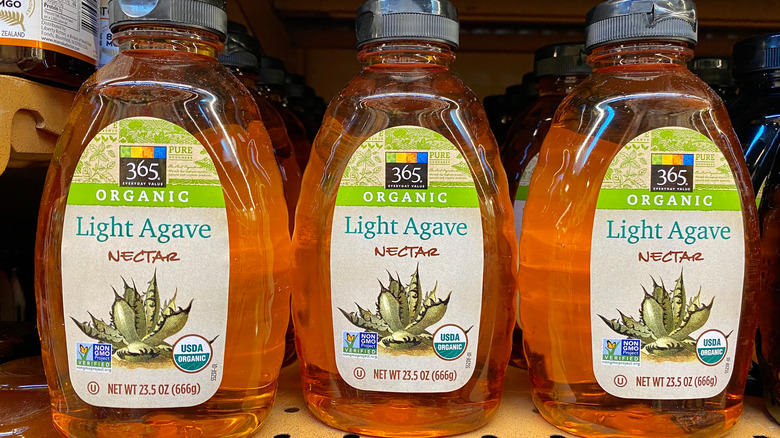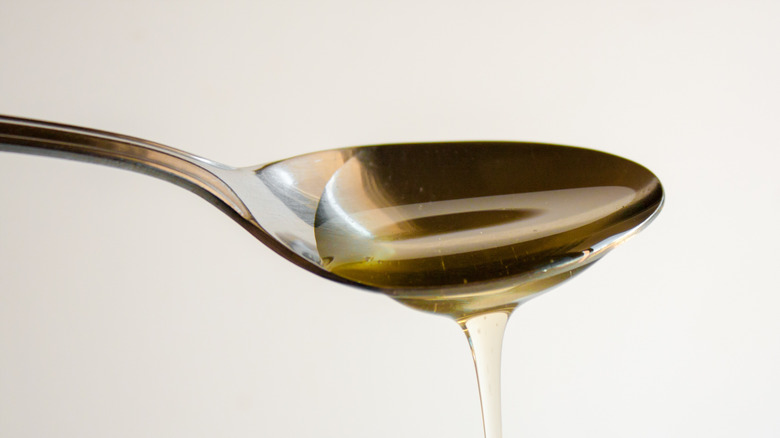What You Need To Know Before Substituting Agave Nectar For Sugar
According to Harvard Health, an overabundance of sugar in the American diet has resulted in the average person consuming well over the recommended amount of the sweetener. From beverages like soda and energy drinks to less apparent foods like bread and ketchup, added sugar is hard-to-avoid in the United States. As high sugar consumption comes with an increased risk of diabetes and cardiovascular issues, many have begun turning to alternative sweeteners like Stevia, honey, dates, and the extremely popular agave nectar to replace the ingredient.
While experts question if agave is a healthy alternative, business analysts project that the ingredient will continue to gain more market share in the coming years (via The Business Research Company). We all want good flavor, and reducing your white sugar intake shouldn't mean you can't enjoy a sweet treat from time to time. With that in mind, it's necessary to remember that anything can become a problem when done in excess, so it's essential to know a few things before swapping sugar for agave nectar.
Hold the sugar please
Agave is a sweet syrup from the agave plant native to Mexico. The sweetener comes in raw, light, and dark variations, each with varying degrees of the distinct agave flavor. Since agave nectar's characteristics overlap with corn syrup and other liquid sweeteners, replacing them in a recipe is easy. Generally, this can be done in a one-to-one ratio; however, when it comes to white sugar, the balance is a little more complex — but still achievable.
The first of two steps is calculating how much agave nectar to use. You'll generally want to use about ⅓ of a cup of agave for each cup of white sugar listed in a recipe, increasing up to ⅔ cup to suit your tastes. (If that sounds a bit complicated, you'd use up to six cups of the liquid sweetener in a recipe that calls for eight cups of granulated sugar.) Given that agave nectar is composed of a significant amount of water, your next step is to reduce the overall amount of liquid in the recipe to account for the added water. As a general rule, decreasing the liquid in the recipe by 25% should do the trick.

